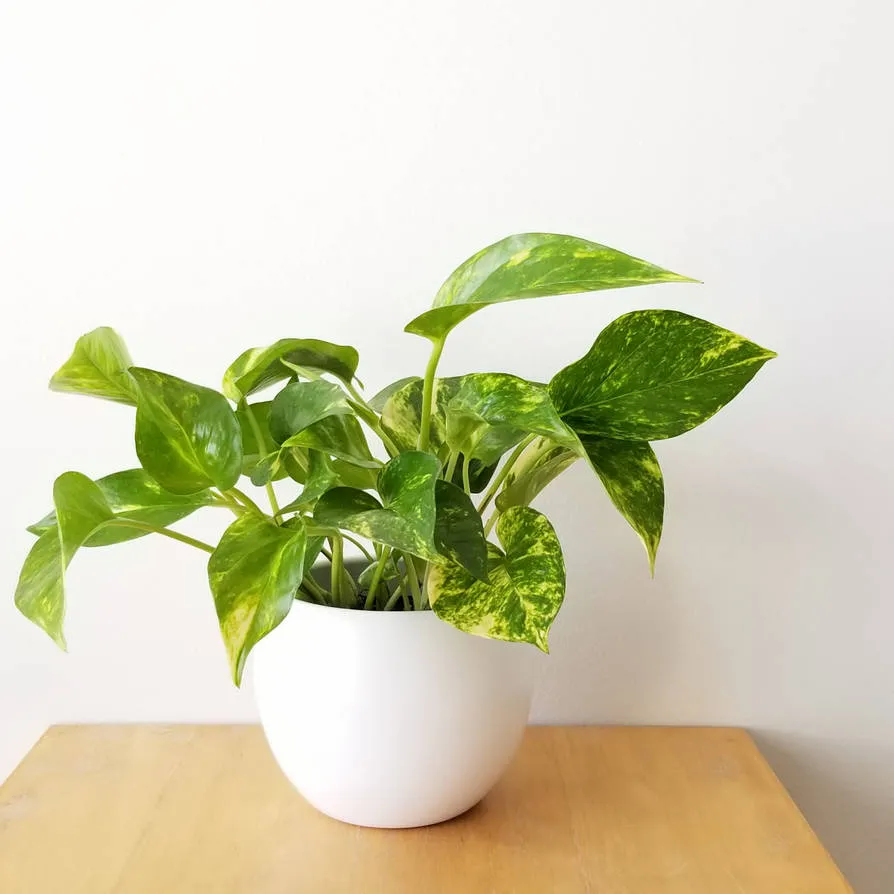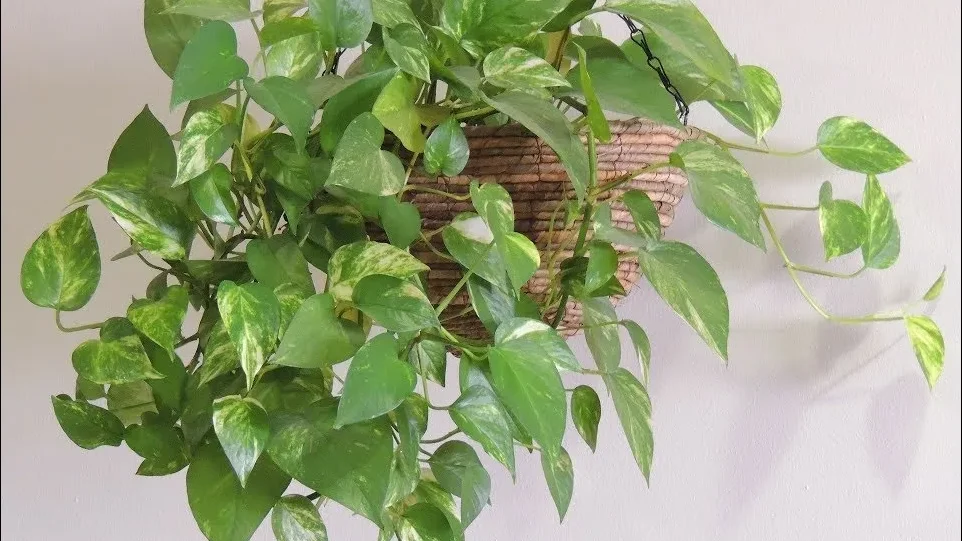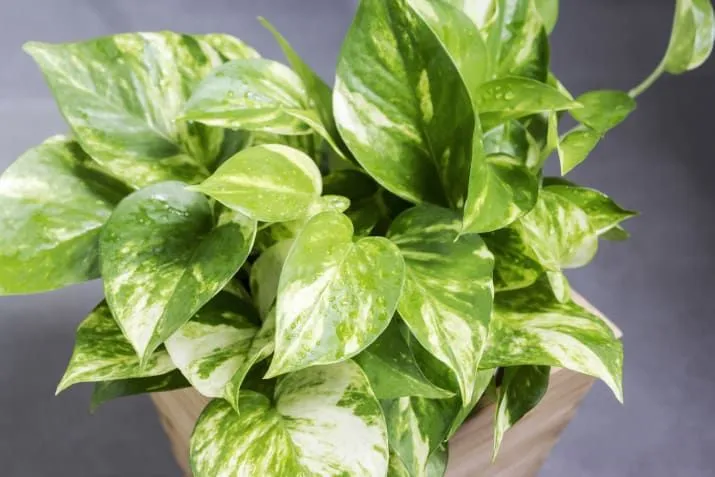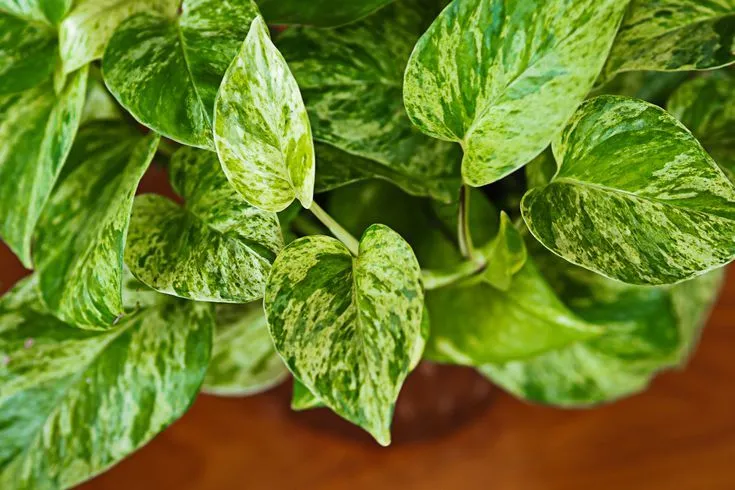How To Grow And Care Emerald pothos

Emerald Pothos, scientifically known as Epipremnum aureum, is a popular houseplant cherished for its lush, vibrant green foliage and ease of care. Often referred to as the “devil’s ivy” due to its resilience and ability to thrive in a variety of conditions, the emerald pothos is a staple in many indoor gardens. This article delves into every aspect of emerald pothos care, from its origins to propagation, ensuring you have all the information needed to keep this beautiful plant flourishing.
Understanding Emerald Pothos
Origin and Natural Habitat
Emerald Pothos is native to the tropical rainforests of Southeast Asia, including regions such as Malaysia, Indonesia, and the Solomon Islands. In its natural habitat, it thrives in the humid, shaded understories of forests, climbing trees and spreading along the forest floor. This vine-like plant has adapted to a variety of environments, making it an incredibly versatile and hardy houseplant.
Planting Emerald Pothos

Choosing the Right Spot: Indoors vs. Outdoors
Emerald Pothos can be grown both indoors and outdoors, but choosing the right spot is crucial for its growth. Indoors, it should be placed in a location with indirect sunlight, as direct sunlight can scorch its leaves. A bright, well-lit room with filtered light is ideal. Outdoors, it can be grown in shaded areas or dappled sunlight, mimicking its natural forest environment. However, it should be protected from harsh, direct sun and extreme weather conditions.
Soil Preparation: Importance of Well-Draining Soil
Well-draining soil is essential for emerald pothos to prevent root rot, which can be fatal to the plant. A suitable soil mix includes equal parts of potting soil, perlite, and peat moss. This combination ensures good aeration and drainage while retaining enough moisture to keep the plant hydrated. Adding organic matter such as compost can further enrich the soil, providing essential nutrients for healthy growth.
Planting Steps: Step-by-Step Guide
- Select a Pot: Choose a pot with drainage holes to prevent waterlogging.
- Prepare the Soil: Mix equal parts potting soil, perlite, and peat moss. Optionally, add compost for extra nutrients.
- Planting: Fill the pot with the prepared soil mix, leaving space for the plant. Place the pothos in the pot, ensuring the roots are spread out. Fill around the roots with soil, gently pressing down to eliminate air pockets.
- Watering: Water the plant thoroughly after planting, allowing excess water to drain out.
- Placement: Place the pot in a bright, indirect light location.
You May Also Like: Fix Brown Spots on Pothos Leaves: Simple Tips & Solutions
Emerald Pothos Care

Light
Emerald Pothos thrives in bright, indirect light but can also tolerate low light conditions. For optimal growth, place the plant near a window with filtered sunlight. Avoid direct sunlight, which can cause leaf burn. In low light, the plant’s growth may slow, and variegation might reduce, but it will still survive. Using grow lights can supplement natural light, especially in darker rooms or during winter months.
Best Soil Mix
A well-draining soil mix is vital for emerald pothos. My personal favorite mix includes:
- 40% potting soil
- 30% perlite
- 20% peat moss
- 10% compost
This blend provides excellent drainage and aeration while retaining necessary moisture. Regularly checking the soil’s moisture level helps prevent overwatering, which is a common issue with houseplants.
Water
Watering emerald pothos can be tricky, but a good rule of thumb is to let the top inch of soil dry out between waterings. Depending on the environment, this could mean watering once a week or less in cooler, more humid conditions. I usually water my pothos every 7-10 days, ensuring the soil is dry to the touch before watering again. Using a watering can with a narrow spout helps direct water to the soil rather than the foliage, reducing the risk of fungal infections.
Temperature and Humidity
Emerald Pothos prefers temperatures between 65-85°F (18-29°C) and high humidity levels. In my experience, maintaining a consistent temperature and humidity level is crucial for the plant’s health. During winter, keeping the plant away from cold drafts and using a humidifier can help maintain the ideal conditions. Regular misting of the leaves can also boost humidity, especially in dry indoor environments.
Fertilizer
Feeding emerald pothos with a balanced, water-soluble fertilizer every 4-6 weeks during the growing season (spring and summer) promotes healthy growth. I prefer using a 20-20-20 fertilizer diluted to half strength to avoid over-fertilizing. During the dormant period (fall and winter), I reduce feeding to once every 8-10 weeks.
Pruning
Pruning emerald pothos helps maintain its shape and encourages bushier growth. I usually prune my pothos in early spring, cutting back any leggy or overgrown vines. Using sharp, clean scissors, I trim just above a leaf node, which stimulates new growth. Regular pruning also helps manage the plant’s size and promotes a fuller appearance.
Popular Varieties of Emerald Pothos
Several varieties of emerald pothos are popular among plant enthusiasts:
- Golden Pothos: Known for its green and yellow variegated leaves.
- Marble Queen Pothos: Features creamy white and green marbled foliage.
- Jade Pothos: Exhibits solid green leaves with no variegation.
- Neon Pothos: Has bright, lime-green leaves that stand out in any collection.
- Pearls and Jade Pothos: Displays white, gray, and green variegation with smaller leaves.
Each variety has its unique charm, making it easy to find one that suits your aesthetic preferences.
Propagating Emerald Pothos

Methods
Emerald Pothos can be propagated through stem cuttings, which is a straightforward and effective method. Here’s a step-by-step guide:
- Select a Healthy Stem: Choose a healthy stem with several leaves and at least one node.
- Cut the Stem: Using clean scissors, cut the stem just below a node.
- Prepare the Cutting: Remove the lower leaves to expose the node.
- Water Propagation: Place the cutting in a jar of water, ensuring the node is submerged. Change the water every few days.
- Soil Propagation: Alternatively, plant the cutting in a small pot with moist soil. Keep the soil consistently damp until roots develop.
I’ve had great success with water propagation. Keeping the jar in a bright, indirect light location speeds up root development. Once roots are about an inch long, I transfer the cutting to soil. Patience is key, as roots can take a few weeks to develop.
Potting and Repotting
Choosing the Right Pot: Best Types of Pots
Selecting the right pot is essential for the health of your emerald pothos. I recommend using terracotta pots for their breathability, which helps prevent overwatering. Ensure the pot has drainage holes to allow excess water to escape.
Repotting Steps: When and How to Repot
Repotting is necessary when the plant becomes root-bound or outgrows its pot. Here’s how to repot your pothos:
- Choose a Larger Pot: Select a pot 1-2 inches larger in diameter than the current one.
- Prepare the Soil: Use a fresh, well-draining soil mix.
- Remove the Plant: Gently remove the pothos from its current pot, loosening the root ball.
- Transfer to New Pot: Place the plant in the new pot, filling around the roots with soil. Press down lightly to secure.
- Water Thoroughly: Water the plant after repotting, allowing excess water to drain.
I usually repot my pothos every 2-3 years or when I notice roots growing out of the drainage holes.
Common Pests & Plant Diseases in Emerald Pothos

Pest Identification: Common Pests and How to Identify Them
Emerald Pothos can be susceptible to common houseplant pests such as:
- Spider Mites: Tiny, web-producing pests that cause yellowing leaves.
- Mealybugs: White, cotton-like insects found on leaves and stems.
- Aphids: Small, green or black insects that cluster on new growth.
- Scale Insects: Brown, oval-shaped insects that attach to stems and leaves.
Disease Identification: Common Diseases and Symptoms
Common diseases affecting emerald pothos include:
- Root Rot: Caused by overwatering, leading to mushy, black roots and wilting.
- Leaf Spot: Brown or black spots on leaves, often due to fungal infections.
- Powdery Mildew: White, powdery substance on leaves caused by fungal spores.
Treatment and Prevention
- Spider Mites: Wipe leaves with a damp cloth and use insecticidal soap.
- Mealybugs: Dab with alcohol-soaked cotton swabs and use neem oil.
- Aphids: Spray with soapy water and introduce beneficial insects like ladybugs.
- Scale Insects: Remove manually with a brush and use horticultural oil.
For diseases, ensure proper watering practices and good air circulation. Fungicides can be used for severe infections.
Troubleshooting Common Problems

Yellowing Leaves
Yellow leaves can indicate overwatering, underwatering, or nutrient deficiencies. Adjust watering practices and fertilize appropriately.
Stunted Growth
Stunted growth may result from poor lighting, inadequate nutrients, or root-bound conditions. Move the plant to a brighter location, feed regularly, and repot if necessary.
Fungal Infections
Fungal infections are often due to high humidity and poor air circulation. Improve ventilation, reduce humidity, and use fungicides if needed.
Seasonal Care Tips
Spring and Summer
During the growing season, water regularly, fertilize every 4-6 weeks, and ensure the plant gets bright, indirect light.
Fall and Winter
In cooler months, reduce watering and feeding frequency. Keep the plant away from drafts and maintain humidity levels.
Conclusion
Emerald Pothos is a versatile, easy-to-care-for plant that adds a touch of nature to any indoor space. With the right care, it can thrive and bring greenery into your home for years to come. Whether you’re a seasoned gardener or a beginner, this comprehensive guide provides all the information you need to keep your emerald pothos healthy and vibrant. Happy planting!
